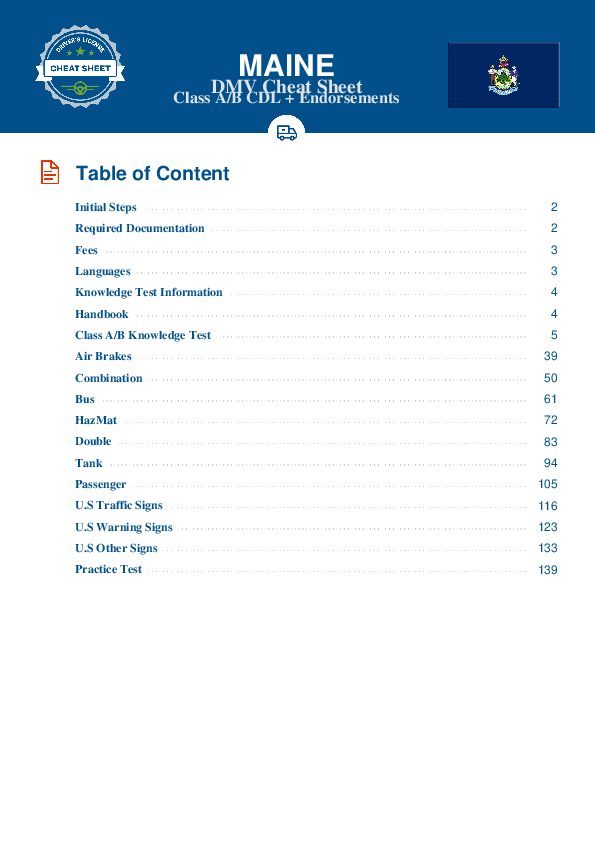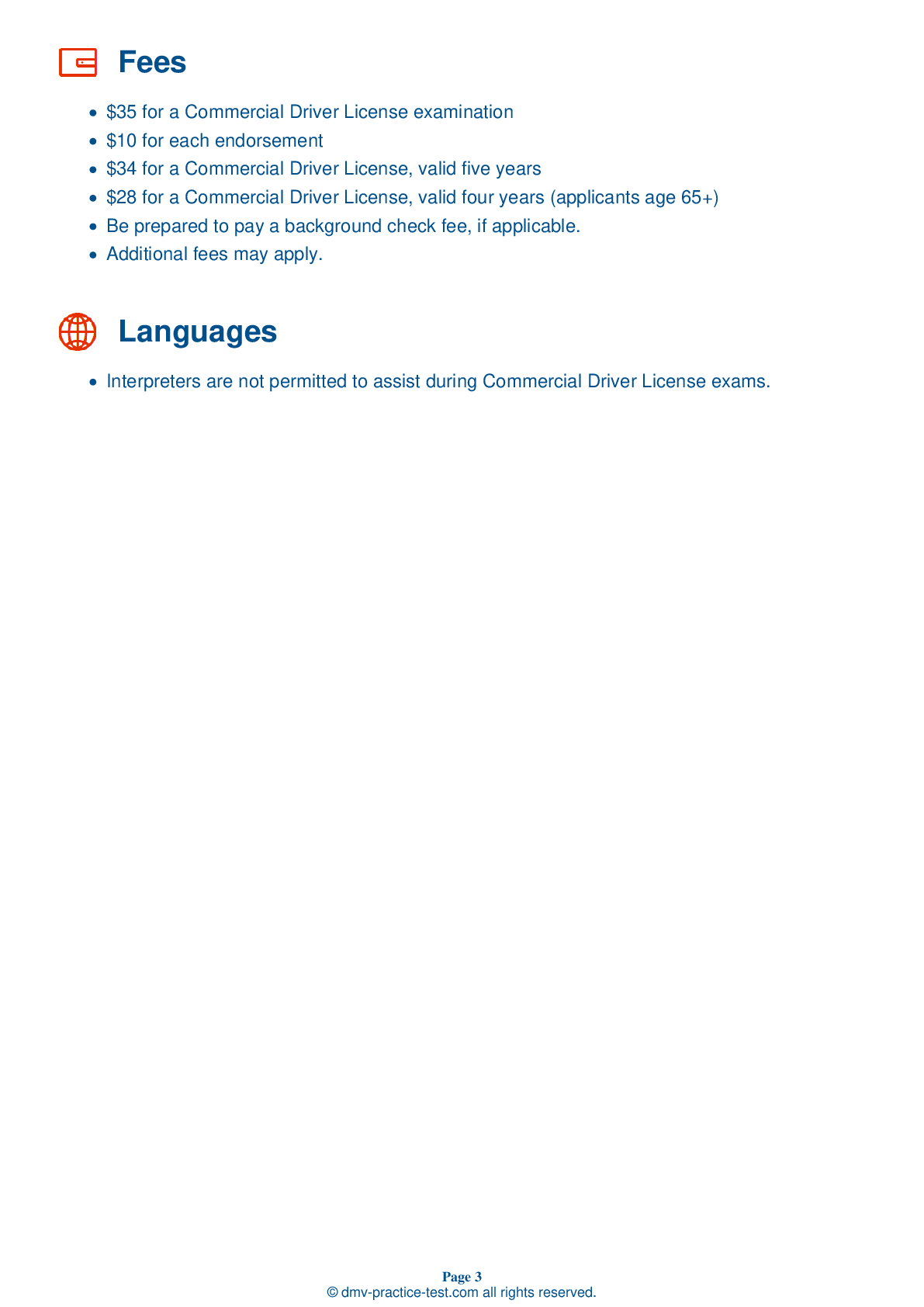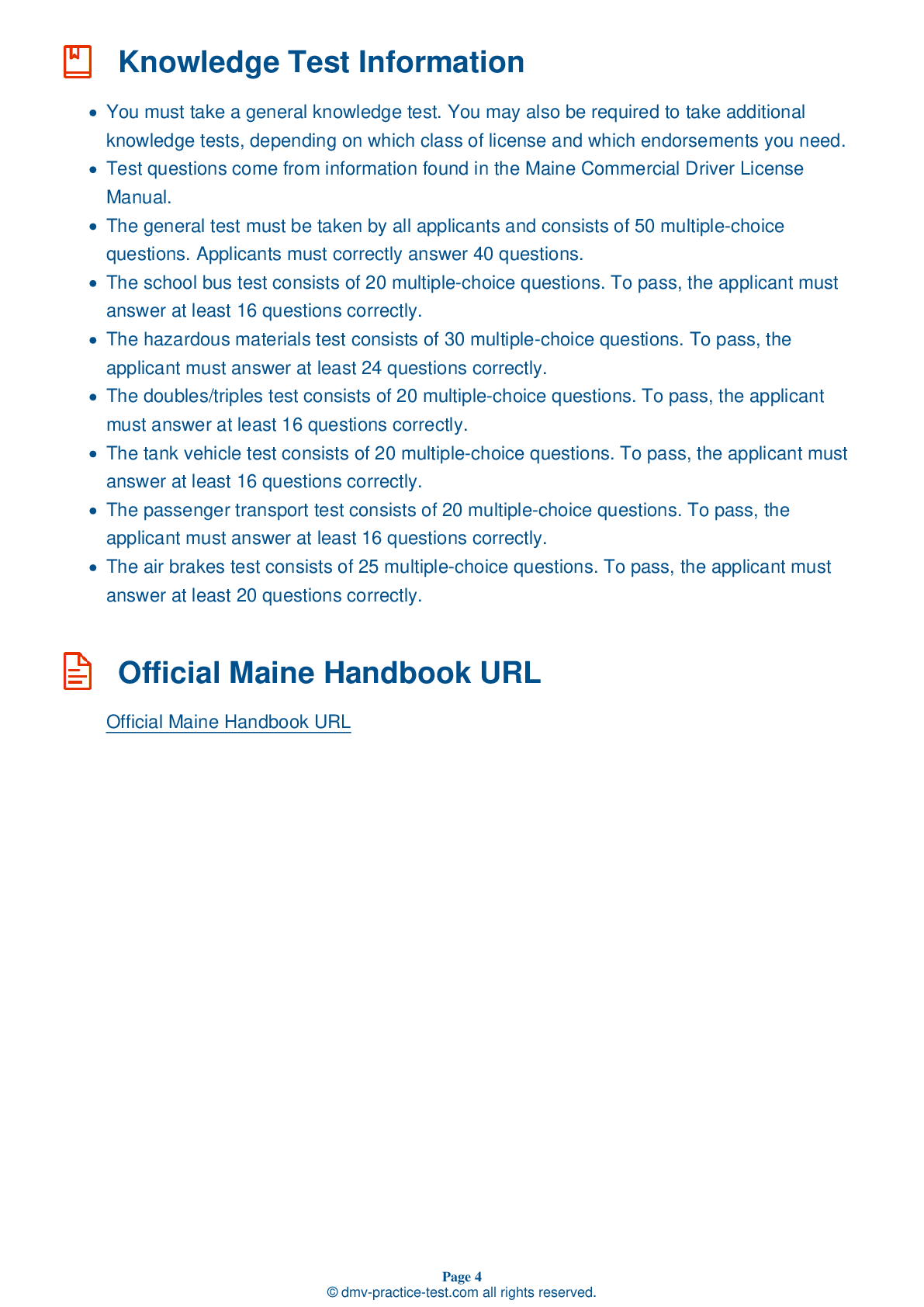Knowledge Test Class B #2
Class B Driving Test | Maine 2025 #2 Page 6 of 7
Train for FREE online with our Maine class B license test. The official exam test consists of several obligatory parts, with all of them checking your knowledge of different blocks of road rules. If you need to obtain a ME CDL class B permit in 2025, practice as much as possible. Free sample tests published on our website will help you check and improve your knowledge and boost your grades. Please bear in mind that CDL class B requirements may vary from state to state.
50
40
20
36 . Bracing is used to:
Blocking and bracing are used to prevent cargo from shifting in transit. Blocking is used in the front, in the back, and on the sides of a piece of cargo to prevent movement. Bracing prevents movement by reaching from the upper portion of a piece of cargo to the floor and sides of the cargo compartment.
37 . Using the brakes creates heat. If too much heat is produced:
Brakes are designed to take a lot of heat, but drivers should not rely solely on the brakes to slow their vehicle. Brakes may fade and lose their ability to slow down the vehicle if they become too hot, so drivers should also rely on the engine braking effect.
38 . You should ____ if the low pressure warning signal activates while you are driving.
If the low pressure warning signal activates while you are driving, it is important that you safely exit the roadway as soon as possible and park your vehicle. If the air pressure gets too low, the brakes will no longer work well enough for you to stop safely.
39 . You should test the low pressure warning signal by:
It is essential that your low pressure warning light functions properly. After allowing the system to charge, you can test the warning signal by rapidly applying and releasing the brake pedal. This will release air from the braking system and the warning signal should come on when pressure drops to a dangerous level.
40 . A driver who stops at a green light could be:
It is important to observe other drivers' actions and identify clues that a person could be driving impaired. Drivers who have had too much to drink, are sleepy, are on drugs, or are ill can present hazards to other drivers. One sign that a driver may be impaired is that they stop in inappropriate places, such as at green traffic lights.
41 . When the spring brakes are on, you should never:
Never push down the brake pedal while the spring brakes are activated. The combined force of springs and air pressure could damage the brakes.
42 . A low air pressure warning signal should activate:
In an air brake system, a low air pressure warning signal must come on if air pressure in the tanks falls below 60 psi. This warning signal may come in the form of a light, a buzzer, or a wig wag.
2025 Maine | Frequently Asked Questions
To acquire a CDH Hazmat endorsement in Maine, you first need a valid Maine CDL. Then, complete a background check and fingerprinting through the Transportation Security Administration (TSA). After this, pass the Hazmat Knowledge Test at your local Bureau of Motor Vehicles (BMV). Lastly, submit your passed test results, TSA approval, and pay the necessary fees to the BMV.
To obtain a CDL Hazmat license, you must first have a valid Commercial Driver's License (CDL). You also need to be at least 21 years old. A background check and fingerprinting through the Transportation Security Administration (TSA) is required. Lastly, you must pass the Hazardous Materials Endorsement Knowledge Test.
When applying for a CDL Hazmat endorsement in Maine, you'll need your current valid CDL, proof of U.S. citizenship or lawful permanent residency (such as a birth certificate, passport, or green card), and proof of Maine residency. You'll also need to provide your Social Security number. Finally, you must complete the TSA's fingerprint-based background check and security threat assessment.
Yes, there is a dedicated written test for the CDL Hazmat endorsement. This test, known as the Hazardous Materials Endorsement Knowledge Test, assesses your understanding of the rules and regulations related to transporting hazardous materials. It covers topics like loading and unloading hazardous materials, bulk packaging, and emergency response procedures.
The CDL Hazmat endorsement written test covers a variety of subjects related to hazardous materials. These include identifying different types of hazardous materials, understanding shipping papers, using placards and labels, loading and unloading procedures, handling emergencies, and following safety rules and regulations. The goal is to ensure safe and responsible handling of hazardous materials.
Yes, there are additional costs associated with obtaining a CDL Hazmat endorsement. Fees include the application fee, fingerprinting fee, and background check fee. The exact costs can vary, so it's recommended to check with the Maine Bureau of Motor Vehicles or the TSA for the most current fees. Remember, these are in addition to any testing or licensing fees for your CDL.
Yes, a background check and security clearance are mandatory for a CDL Hazmat endorsement. The Transportation Security Administration (TSA) conducts a security threat assessment including fingerprinting. This process checks for any criminal, immigration, or security issues that might disqualify an applicant. The aim is to ensure the safety and security of hazardous materials transportation.
Yes, specialized training and certification are required for the CDL Hazmat endorsement. Applicants must pass the Hazardous Materials Endorsement Knowledge Test, which covers regulations and practices for transporting hazardous materials. Additionally, they must pass a TSA security threat assessment. These steps ensure that drivers are equipped to safely handle and transport hazardous materials.
No, you cannot legally transport hazardous materials without a valid CDL Hazmat endorsement in Maine or any other state. The endorsement is required by federal law to ensure that drivers are properly trained and capable of handling hazardous materials safely and effectively. Violating this can lead to serious penalties.
Yes, you can add the CDL Hazmat endorsement to your existing CDL license. You don't need to apply for a new license. However, you must pass the Hazardous Materials Endorsement Knowledge Test and a TSA security threat assessment. Once these are successfully completed, the Hazmat endorsement can be added to your current CDL.



